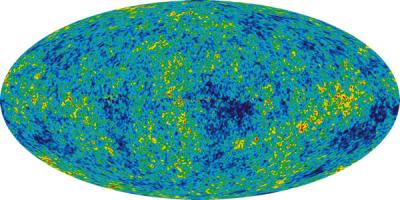
The Universe is expanding; the further away a galaxy is, the faster it is receding, which is known as Hubble’s law. This observational fact implies that, if we go back in time, the Universe was small, dense and extremely hot. The evolution of the early Universe is described by the Friedmann-Lemaitre-Robertson-Walker (FLRW) spacetime, a homogeneous and isotropic solution of the Einstein equations, and the standard big-bang theory is based on the FLRW spacetime. Hubble’s law, the big bang nucleosynthesis (BBN), and the cosmic microwave background (CMB) radiation provide key evidence for the standard big-bang theory. Those three observations still remain important probes of the early Universe.
Despite its great success the big bang theory is plagued with serious theoretical issues such as the horizon problem and the flatness problem. The inflationary universe scenario was originally proposed to solve these problems which asserts that the Universe underwent an exponentially accelerated expansion at its very early stage. However, it has been realized that the most important theoretical prediction of inflation is the generation of spatial curvature perturbations that originate from the quantum vacuum fluctuations of a scalar field which drives inflation (called the inflaton), and that give rise to density perturbations which account for the seed of the structures such as galaxies and clusters of the galaxies seen in the current Universe. The properties of the density perturbations depend on models of inflation, and hence can be probed by studying the CMB anisotropy and/or the large scale structure of the Universe. Furthermore, it is known that inflation also produces a cosmological gravitational wave background from the intrinsic spacetime vacuum fluctuations, and many efforts are currently being made to detect the gravitational background.
The recent progress in observational techniques has enabled us to study the evolution of the early Universe with unprecedented precision, and our understanding of the Universe has significantly increased. Nevertheless it is not known at all how inflation occurred, how the Universe was reheated after inflation, how the dark matter as well as the baryon asymmetry were created, whether there is a primordial non-Gaussianity in the density perturbations, and so on. We would like to tackle those questions in order to reveal how the Universe evolved from the inflationary epoch to what it looks like at present.
(Last update: 2018/05/07)
Members
- Shunsuke Adachi
- Robert Brandenberger
- Tomohiro Fujita
- Yannis Georis
- Tommaso Ghigna
- Elisa Gouvea Mauricio Ferreira
- Masashi Hazumi
- Anamaria Hell
- Masahiro Ibe
- Hirokazu Ishino
- Baptiste Jost
- Masahiro Kawasaki
- Sergey Ketov
- Ryuichiro Kitano
- Takeshi Kobayashi
- Kazunori Kohri
- Eiichiro Komatsu
- Kazuya Koyama
- Alexander Kusenko
- Qiuyue Liang
- Kaloian Lozanov
- Luca Marchetti
- Tomotake Matsumura
- Marta Monelli
- Shinji Mukohyama
- Hitoshi Murayama
- Maria Mylova
- Yasunori Nomura
- Ippei Obata
- Shi Pi
- Yuki Sakurai
- Misao Sasaki
- Katsuhiko Sato
- Kai Schmitz
- Satoshi Shirai
- Xue Song
- Masahiro Takada
- Volodymyr Takhistov
- Victoria Venken
- Jianing Wang
- Taizan Watari
- Tsutomu Yanagida
- Vicharit Yingcharoenrat
- Jun'ichi Yokoyama






